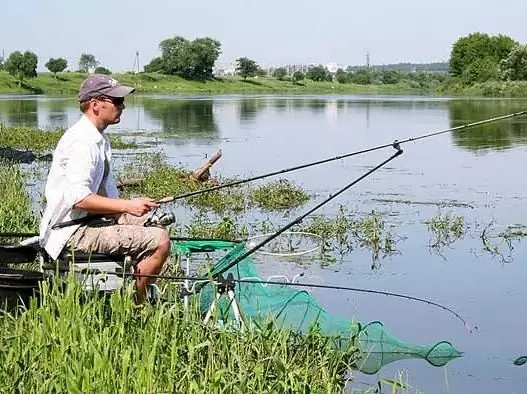Each species of fish prefers to live in the most favorable places of the reservoir. It all depends on the lifestyle, biological characteristics and habits of the fish. Finding such a place means ensuring yourself good fishing success. Therefore, it is so important to learn how to correctly determine the nature of the soil and the relief of the reservoir by external signs.

Instructions
Step 1
You should not let everything go to chance, throwing tackle wherever you get, concealing the hope that a fish will bite. In this regard, one should be guided by the rule of behavior of fish, which always move against the current, going against the resistance of the water. Therefore, the fisherman must take into account all the eddies in the reservoir, holes and rifts. It is in such places that your chances of a good catch increase several times.
Step 2
If the lake or river is small, then it will be much easier to look for places for feeding or parking for fish than in reservoirs of a large area of the water area. The visual visibility of the current and the shoreline will help the fisherman determine where to fish. Very often the fish is found not only in rifts or holes, but also near dense coastal vegetation. If the current on the river is rather slow or there is none at all, find a place where the channel narrows, it is here that the current increases somewhat.
Step 3
Aquatic vegetation is a sign of the presence of a large number of fish, as most of them feed on this vegetation. As for the rivers, here the piles of bridges, trees lying in the water, steep banks, where the roots of coastal trees go under the water, are considered the favorite places of fish stopping.
Step 4
You should also take into account the depth of the reservoir, because the fish is looking for where it is deeper. To do this, it is not at all necessary to dive to the depth of a pond, lake or river. If a susak or sedge grows here, then the depth is up to a meter. At a depth of two meters, cattails, reeds and pondweed usually grow. You can determine a three-meter depth and more by the presence of filamentous algae and water lilies. By the way, all of these plants are excellent pasture for fish.
Step 5
To catch crucian carp, tench and rudd, you should look for deep places with a muddy bottom and strong thickets. To catch the asp, throw the tackle into the places of the whirlpools that are at the bottom of the rifts. From all this, it follows that the fish tries to stay at the mouths of small rivers into the main ones, where there is a current speed and sufficient depth, near rafts, bridges and crossings, near dense coastal vegetation and in tight areas of the reservoir.






